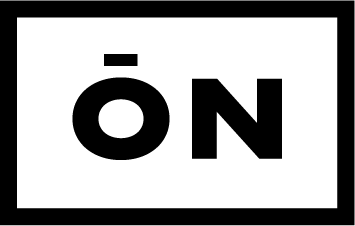How Much Does it Cost to Start a Ghost Kitchen?
The culinary landscape is evolving, and the rise of ghost kitchens is reshaping the way we think about dining. For aspiring entrepreneurs, the appeal of venturing into the world of ghost kitchens lies in their cost-effectiveness and operational efficiency. No real estate headaches, no construction delays, and no overwhelming staff hiring processes—sounds like a dream, right?
However, before you dive headfirst into the world of ghost kitchens, it's crucial to dissect the key expenses that come with starting a ghost kitchen. In this post we'll explore the various financial considerations that can make or break your ghost kitchen venture.
Facilities that match your ghost kitchen’s needs
One of the primary advantages of ghost kitchens is the absence of a traditional storefront. However, that doesn't mean you can cut corners on the facilities. Renting a commercial kitchen space, equipped with the necessary infrastructure, utilities, and safety measures, is a critical expense. Prices may vary based on location, kitchen size, and available amenities.
Consider factors such as the proximity to your target market, accessibility for delivery services, and the overall suitability of the space for your specific cuisine. Factor in potential rent increases over time, and ensure that your chosen facility aligns with the scalability of your ghost kitchen business.
Equipment that brings your ghost kitchen’s menu to life
Equipping your ghost kitchen with the right tools is essential for smooth operations. Industrial-grade ovens, stovetops, refrigerators, and other specialized appliances tailored to your menu requirements are all part of the initial investment. You’ll want to consider equipment when finalizing your menu to ensure you can provide a high quality product with the equipment on hand or potentially purchase an expensive piece of equipment for a single item on the menu. It sounds obvious, but in the excitement of building a menu (especially something brand new and not tested with a larger audience) you can overlook these things and be stuck making an unnecessary investment that takes up valuable space.
Don't forget about the maintenance costs, repairs, and potential upgrades as your business grows. It’s just a reality that over time something is going to break and need to be fixed. Take time to evaluate reviews and ratings of different equipment before making a purchase based on price alone. Investing in high-quality, durable equipment may seem like a significant upfront cost, but it can save you money in the long run by reducing downtime and replacement expenses. Factor in energy-efficient appliances to keep operational costs in check and demonstrate your commitment to sustainability.
Inventory and supplies
Managing your ingredient and supply inventory efficiently is vital for controlling costs and reducing waste. Factor in the cost of ingredients, packaging materials, and inventory management software. Negotiate with suppliers for bulk discounts and explore local sourcing options to reduce transportation costs.
Words of advice for getting started: Keep your menu simple.
While it’s tempting to want to offer everything or try a lot in the beginning stages, you have a better chance of protecting your food cost by keeping it simple.
Implement inventory control measures to minimize food waste, such as a just-in-time (JIT) inventory system. Regularly review your menu and adjust inventory levels based on demand patterns, seasonality, and customer preferences.
Staffing efficiently for your ghost kitchen
We’ve seen ghost kitchens run with a single person and we’ve seen much more. While ghost kitchens eliminate the need for extensive front-of-house staff, you still require a dedicated team to handle kitchen operations, food preparation, packaging, and delivery – especially if you have the intention of growing your business. Chefs, kitchen assistants, delivery drivers, and administrative staff contribute to your labor costs.
Think about what it is that you do best and be sure to account for labor around that. It’s easy in the planning process to think, “I can just do that until we get a bit bigger”, but it only takes a few of those before you’re stretched and what you do best begins to suffer because of it.
Consider the local labor market rates, employee benefits, and training expenses. Developing a streamlined process for hiring, training, and managing staff is crucial to ensure operational efficiency and maintain a positive work environment. Talk to local restaurant owners and managers about the challenges and trends that they see on an ongoing basis.
Technology to simplify
The success of a ghost kitchen hinges on its ability to leverage technology for order management, inventory tracking, and customer engagement. Investing in a robust point-of-sale (POS) system, a user-friendly website or app, and efficient order fulfillment technology is crucial.
Budget for software subscriptions, website/app development and maintenance, and employee training on these platforms. Explore innovative technologies such as AI-driven analytics for customer preferences and operational efficiency to stay ahead of the competition.
The essentials: Insurance/Licenses/Permits:
Ensure legal compliance and protect your business with the necessary insurance, licenses, and permits. Liability insurance, workers' compensation, and health and safety certifications are essential to safeguard your business and employees. Research local regulations for food handling, zoning, and health permits.
Budget for license fees, inspections, and legal consultation to navigate the complexities of the regulatory landscape. Failing to obtain the required licenses can lead to fines, closures, and damage to your brand reputation.
Building awareness
Building brand awareness and attracting customers to your ghost kitchen is an ongoing effort that requires a dedicated budget. Invest in a well-thought-out marketing strategy that includes online presence, social media campaigns, and partnerships with food delivery platforms.
Again, don’t just consider the dollars involved but also the time. Posting consistently on social media, responding to reviews, and special requests feels easy on the surface but can often become the activities that are pushed to the bottom of the list.
While digital marketing can be cost-effective compared to traditional advertising, allocate funds for promotions, discounts, and loyalty programs to entice new customers and retain existing ones. Utilize third-party marketplaces as a way to drive new customers and build awareness and evaluate the promotions they offer. Many of the platforms offer promotions that are available only to first-time customers so you can get your food to more people without sacrificing margin on repeat orders.
Take time to consider your best and worst-case scenario
While starting a ghost kitchen may seem like a cost-effective alternative to traditional restaurants, it's crucial to approach the venture with a clear understanding of the associated expenses. From facilities and equipment to staffing, marketing, technology, inventory, and legal considerations, a comprehensive budget is essential for the success of your ghost kitchen venture.
By meticulously planning and allocating resources to these key areas, you can navigate the challenges of the evolving food industry and position your ghost kitchen for success and sustainable growth. As the culinary landscape continues to transform, those who master the delicate balance of quality, efficiency, and financial prudence will find themselves at the forefront of the ghost kitchen revolution.
Getting started can be even easier
ON Kitchens was designed to make all of these steps easier for you. Whether you are a food entrepreneur that is just embarking on your journey into a new venture or an established restaurateur looking to expand their footprint in the Los Angeles market, we look forward to helping you expand. Tour one of our facilities today!

